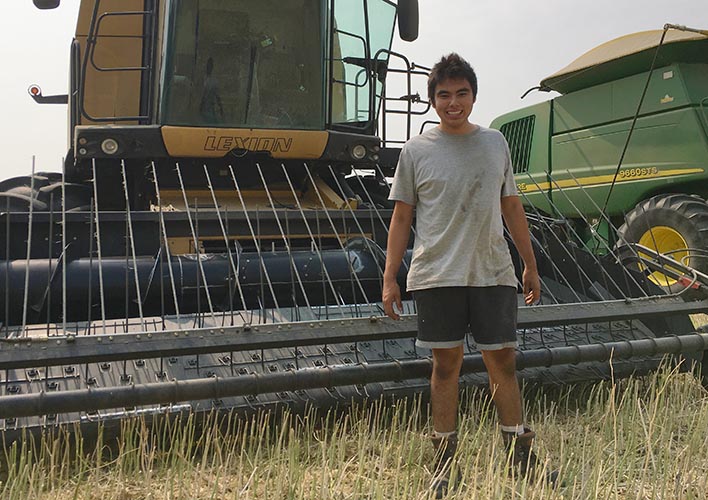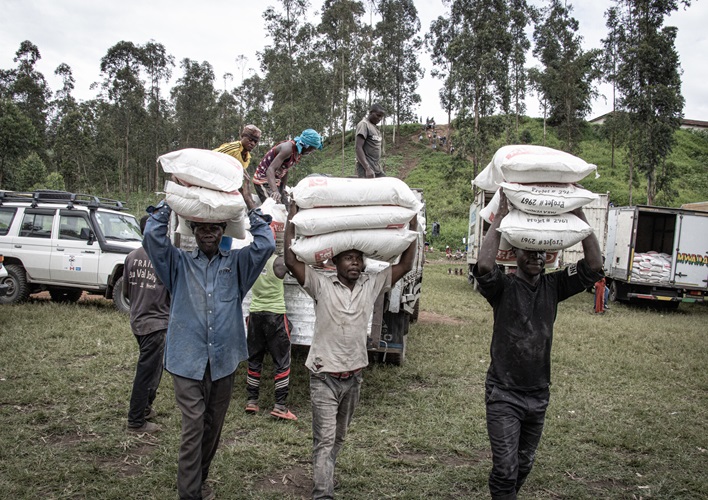Joshua Giesbrecht’s grandfather was the Foodgrains Bank’s first executive director. This year, the 18-year-old drove a combine during the Landmark growing project’s harvest for the first time ever, marking a special occasion for the family. (Photo: John Longhurst)
“Opa will be smiling from heaven today.”
That’s the first thing 18-year-old Joshua Giesbrecht told his mother when he woke up on August 18—the day of the annual Landmark, Man. Canadian Foodgrains Bank growing project harvest.
Not only was it the first time the grade 12 student got to drive a combine for the growing project harvest, it was special for another reason: Joshua is the grandson of the Foodgrains Bank’s first executive director, Wilbert Loewen.
Loewen, who died in 2016, served in that capacity from 1979-90.
“It felt good to participate, knowing my Opa started this,” Joshua said after he and eight other farmers combined 60 acres of canola.
“I was thinking of him all the time I was driving the combine.”
Joshua’s mother, Deb Unger Loewen, said she was “misty-eyed” watching Joshua driving the combine on the field.
“It’s great that this is something he wants to do, that he wants to be involved with it,” she said. “To see him so excited about today was gratifying as a parent.”
I was thinking of him all the time I was driving the combine.
In addition to supporting the Landmark growing project, Deb and her boys, including younger son Daniel, can home-grown vegetables and sell them to raise funds for the Foodgrains Bank.
For John Longhurst, Director of Resources and Public Engagement, Joshua’s connection to the first executive director of the Foodgrains Bank is unique, but it is part of a larger story of how the children and grandchildren of the first supporters of the Foodgrains Bank are continuing that tradition.
“It was unique to see Joshua’s special connection with his grandfather through the harvest,” he says.
But equally inspiring is seeing how many others are following in the footsteps of their parents and grandparents to help those who don’t have enough to eat.
“It’s great to see how many of the earliest supporters have passed the vision for addressing global hunger down to the next generations,” he says.
He’s heard of cases where parents sell the family farm to their children, with the stipulation that a portion of the proceeds of each year’s crop must be donated to the Foodgrains Bank.
“For them, it’s a family thing, something they do every year, and that their children want to keep doing, too,” he says.
In 2017, there were 245 growing and community projects and auctions from PEI to B.C. Altogether, they raised $7.3 million for the Foodgrains Bank.
Together with other donations from individuals, churches, corporations and others, a record $13.7 million was donated to the Foodgrains Bank last year.
With support from matching grants from the Canadian government, the Foodgrains Bank provided a total of $37.6 million of assistance to 843,967 people in 34 countries.
“All of this is possible because of people like Joshua, his parents, and the many others who keep the spirit of giving alive,” Longhurst says.
“We are grateful for each and everyone one.”




